Best mandolins 2025: Our top-rated mandolins for all budgets
Whether you play folk, bluegrass, rock, or alternative, we’ve curated the best mandolins from Gibson, Fender, Epiphone, Ibanez, The Loar, and more…

The mandolin is the ultimate little acoustic with the big character, a favourite with everyone from classical maestros to bluegrass pickers and folksy noodlers. The best mandolins have even found their way into rock, alternative and experimental genres.
Consider how the beauty of a mandolin’s tone sweetens a song such as ‘Every Time You Say Goodbye’ by Alison Krauss? Or the unique character a mandolin adds to the classic Rod Stewart track ‘Maggie May’?
The mandolin takes a lifetime to master, but it’s surprisingly quick and easy to reach a standard where people stop sticking their fingers in their ears. Despite all those tuning buttons there are really only four strings, so if you can play the guitar then it’s easy enough - a third easier to be precise - to get to grips with the mandolin. Better still, the tuning is the same as a violin, so if you can play the fiddle then you can play the mandolin too.
Lastly, they’re incredibly portable and easy to stow, making life so much more convenient for the gigging musician. Just pity the double-bass player.
If you want to learn more about the mandolin take a look at our buying advice section head after our product section. To discover the best mandolins you should consider today, keep scrolling for our top picks.
Best mandolins: Our top picks
The only thing that stops us recommending the legendary Gibson F-5L is its stupendous price tag, which puts it totally out of reach for the vast majority of players. So, with our feet firmly back on the ground we propose The Loar LM-700 F-Mandolin VS instead. It’s a stunning ‘inspired by’ tribute to the F-5, complete with a hand-carved top and back, superb tonewoods and fine quality hardware. It’s a favourite among pros and intermediate players alike.
If the LM-700 is beyond your budget we recommend the Ibanez M700. Its shape and tone are also reminiscent of the Gibson, its tonewoods are solid rather than the laminates typically used to build cheaper mandolins, and it’s accessibly priced. The M700 is also a refined-looking instrument that you’ll be proud to play anywhere.
Best mandolins: Product guide
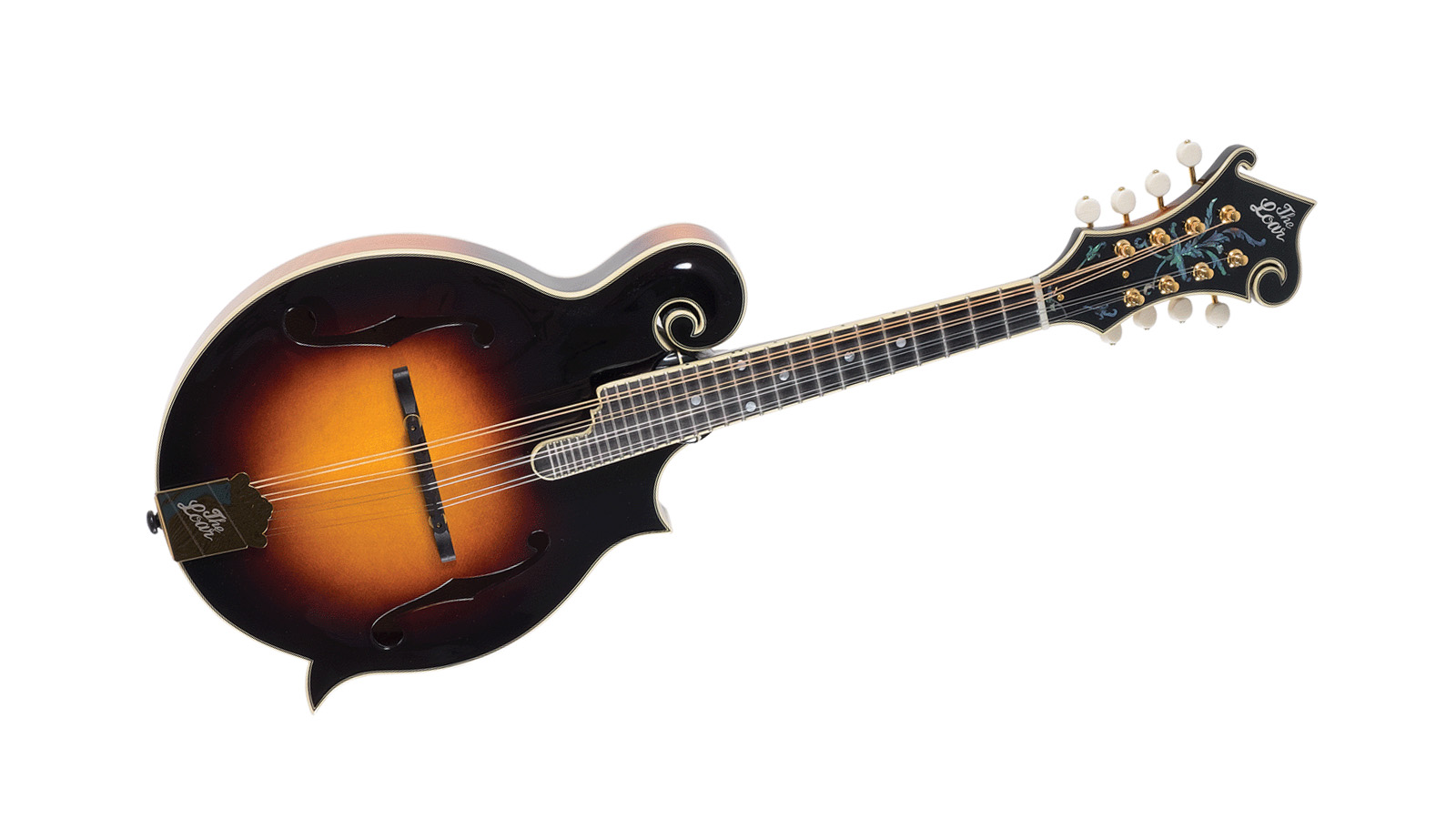
1. The Loar LM-700 F-Mandolin VS
Our expert review:
Specifications
Reasons to buy
Reasons to avoid
The somewhat cheekily named The Loar takes inspiration from visionary 1920’s Gibson craftsman Lloyd Loar, although there is no connection between the two companies or the late, great luthier. Nevertheless, the company does produce some fine mandolins, the LM-700 being one of the best. It’s yet another retro-inspired instrument that takes its design cues from Lloyd’s work of the early decades of the 20th Century.
Its AAA solid spruce top and solid flame maple back and sides are all hand-carved, which represents incredible value and adds a healthy wallop of tonal authenticity. The Abalone/mother of pearl inlays - especially the intricate Fleur on the headstock - are simply stunning, as is the ivoroid binding. Tuning machines are gold Gotoh’s, the nut is genuine bone, the fingerboard ebony and the neck is flamed maple.
Tone is clean but never piercing, there’s a richness and warmth to the LM-700’s tone, no doubt helped by the graduated, braceless top and ultra-thin poly finish.
All in all, this is a superbly made mid-level instrument that sounds as fine as it looks.
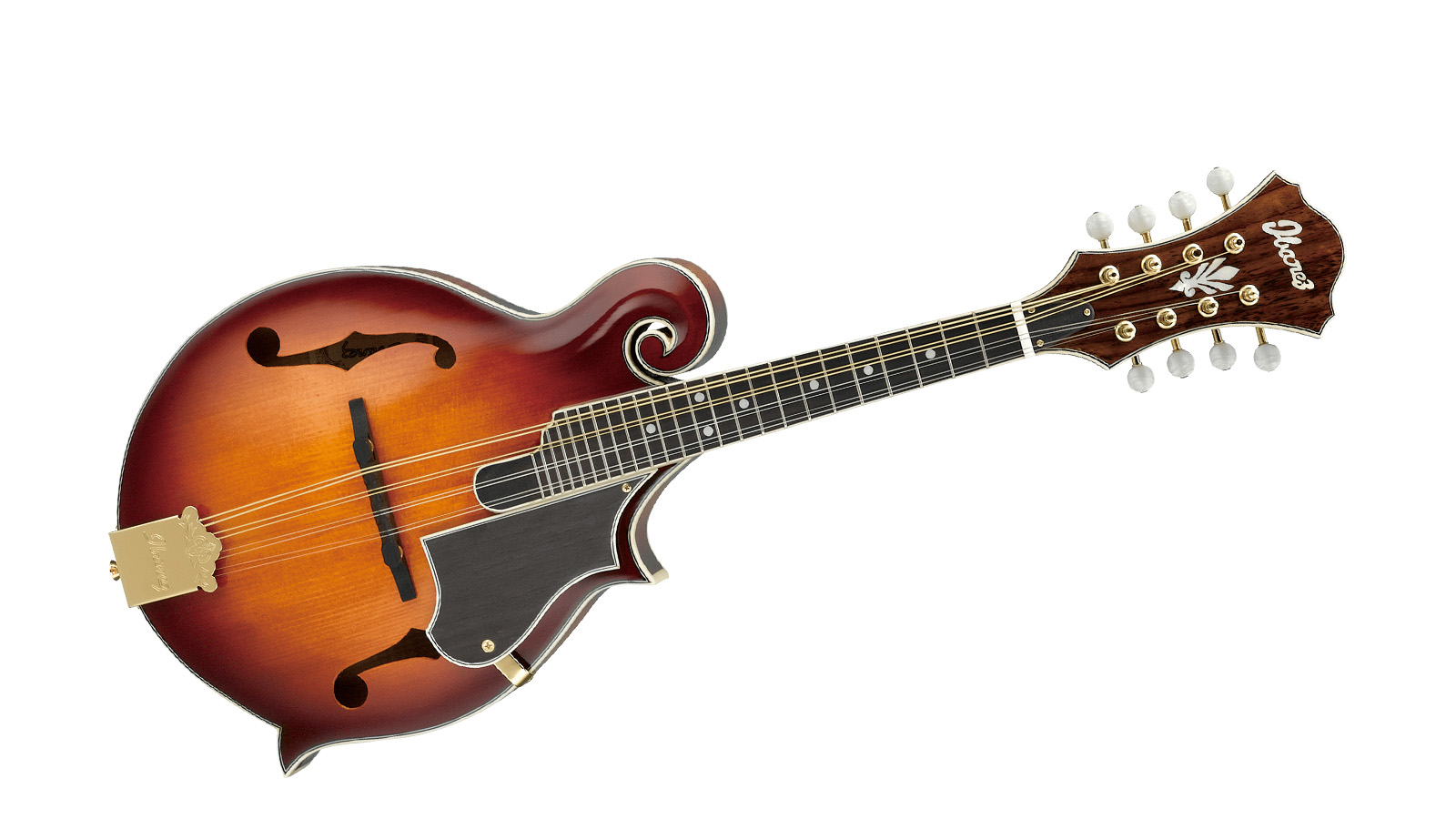
2. Ibanez M700 Mandolin
Our expert review:
Specifications
Reasons to buy
Reasons to avoid
If you can stretch your budget beyond entry-level instruments, the M700 has a lot going for it. To our eyes, the F-style body is more appealing than a simpler A-style mandolin, and small details, such as the ivory-coloured binding, dot inlays and open-gear tuners mark it out as something a bit special.
Best of all are the tonewoods, which are carved solid pieces rather than cheaper laminate sheets. The top is solid Sitka spruce, while the back and sides are gorgeous sections of flamed maple. The resulting tone is markedly different to run-of-the mill instruments you can buy for just a couple of hundred bucks less - louder, crisper, warmer and better-balanced.
The rosewood fretboard with matching bound rosewood pickguard are eye-catching touches, and the headstock inlay is both subtle and refined. This is a lot of mandolin for the money, one well-worth saving that little bit longer for.
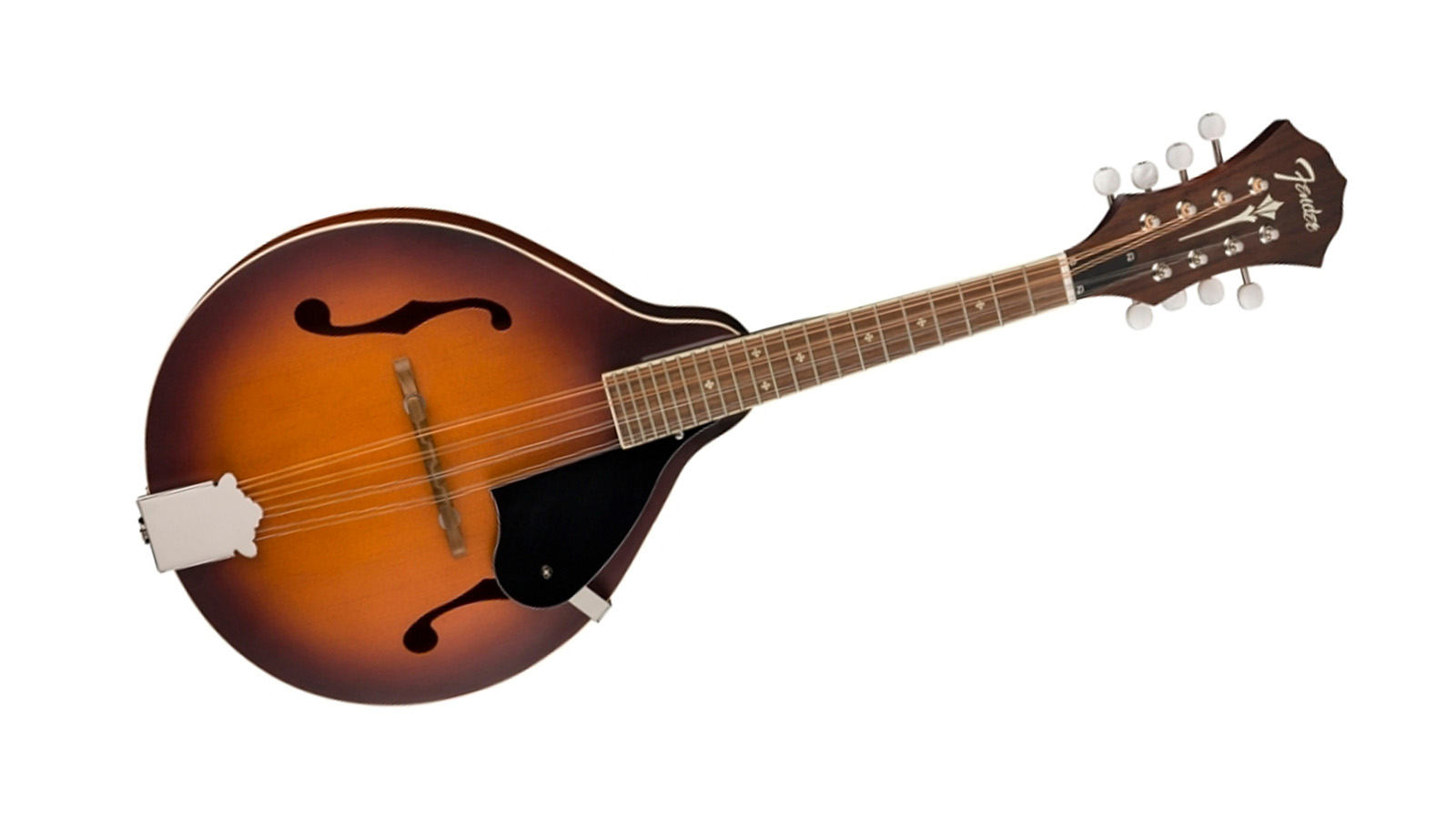
3. Fender PM-180E Mandolin
Our expert review:
Specifications
Reasons to buy
Reasons to avoid
Here’s a feature-rich mandolin that won’t break the bank. Fender has been manufacturing mandolins for decades, so it knows a thing or two about getting great tone from these little instruments, even at this price point.
The PM-180E is part of Fender’s Paramount Bluegrass Series, a range of instruments designed to look suitably retro, but with plenty of modern appointments. It’s an A-style mandolin built with the time-proven combination of spruce top and mahogany back and sides. Both are laminated, to keep costs reasonable, yet Fender has also specced a decent length of maple for the neck, together with a lovely slab of walnut for the fingerboard. Other nice-to-have features include the pretty snowflake inlays, aged white binding, bone nut and open-gear tuners with pearloid buttons.
Bracing is the traditional parallel tone bar type, befitting the PM-180E’s vintage vibe. Need more volume? No problem. It can be amplified via the thoroughly modern inbuilt Fishman Implant Mandolin Pickup system.
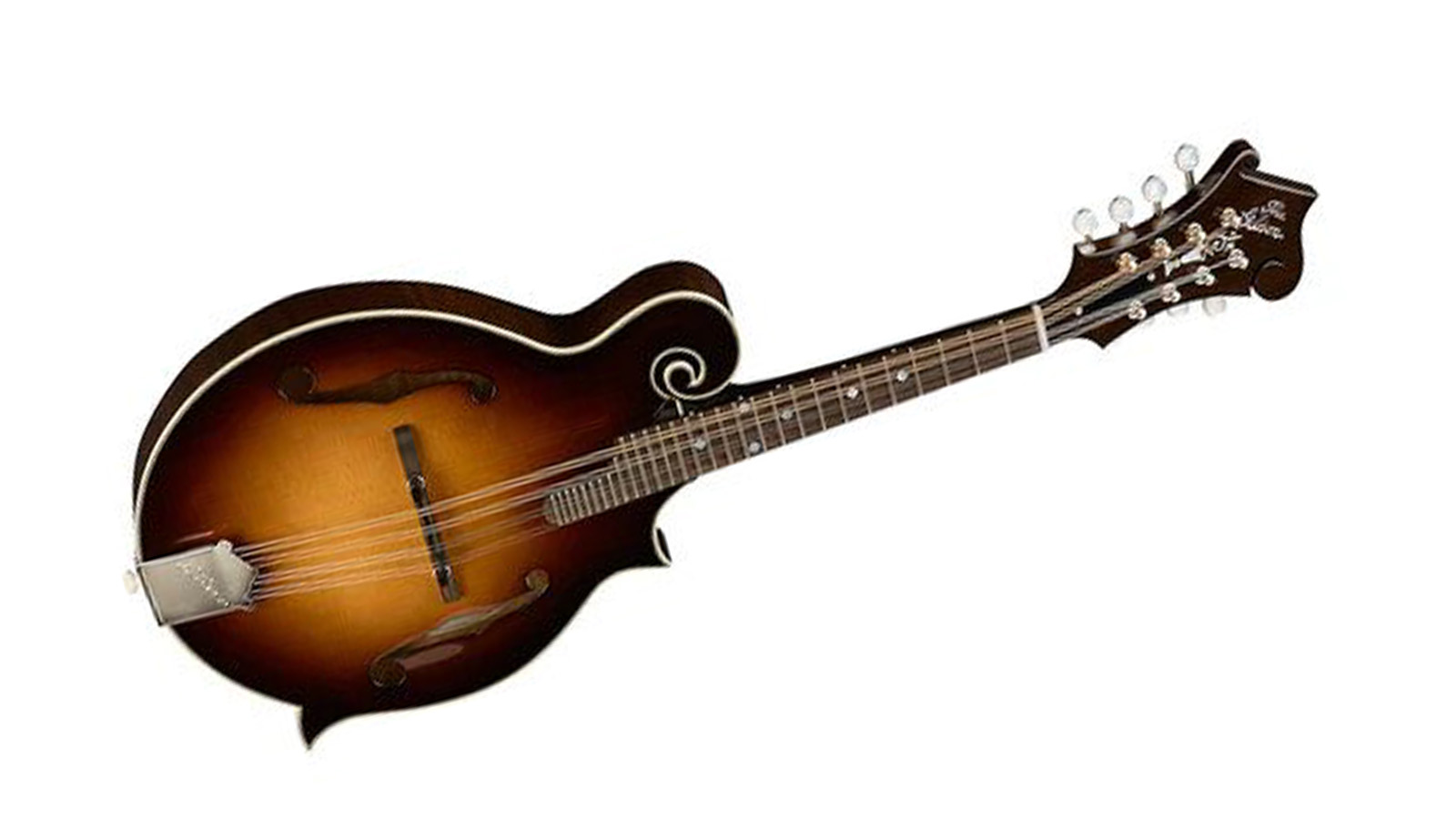
4. Gibson F-5L
Our expert review:
Specifications
Reasons to buy
Reasons to avoid
Gibson’s F-5L represents the pinnacle of US archtop mandolin manufacture. An utterly faithful recreation of a Lloyd Loar crafted 1920s Gibson mandolin, it’s a breathtaking instrument with a breathtaking number printed on its price tag.
The F-5L - the L is a nod to Lloyd - is handcrafted in limited quantities by a small team of skilled Gibson luthiers. Much of your money, and this is what makes the F-5L a standout instrument, will be invested in the expertly hand carved top and back. While some of the cheaper mandolins in this guide will use thin sheets of heat pressed timber, or laminate, the Gibson is carved to extremely fine tolerances. It’s an immensely skilful job, the luthiers are quite literally liberating tone from a block of wood.
It's simply gorgeous. The top is spruce, while the back, sides and neck are finest figured maple, all traced by a vintage-style binding. Pearl dot inlays populate the silky smooth ebony fingerboard, while an exquisite fern adorns the over-sized peghead. It does, of course, sound sublime - there’s a noticeable complexity in its tone that budget mandolins simply cannot match.
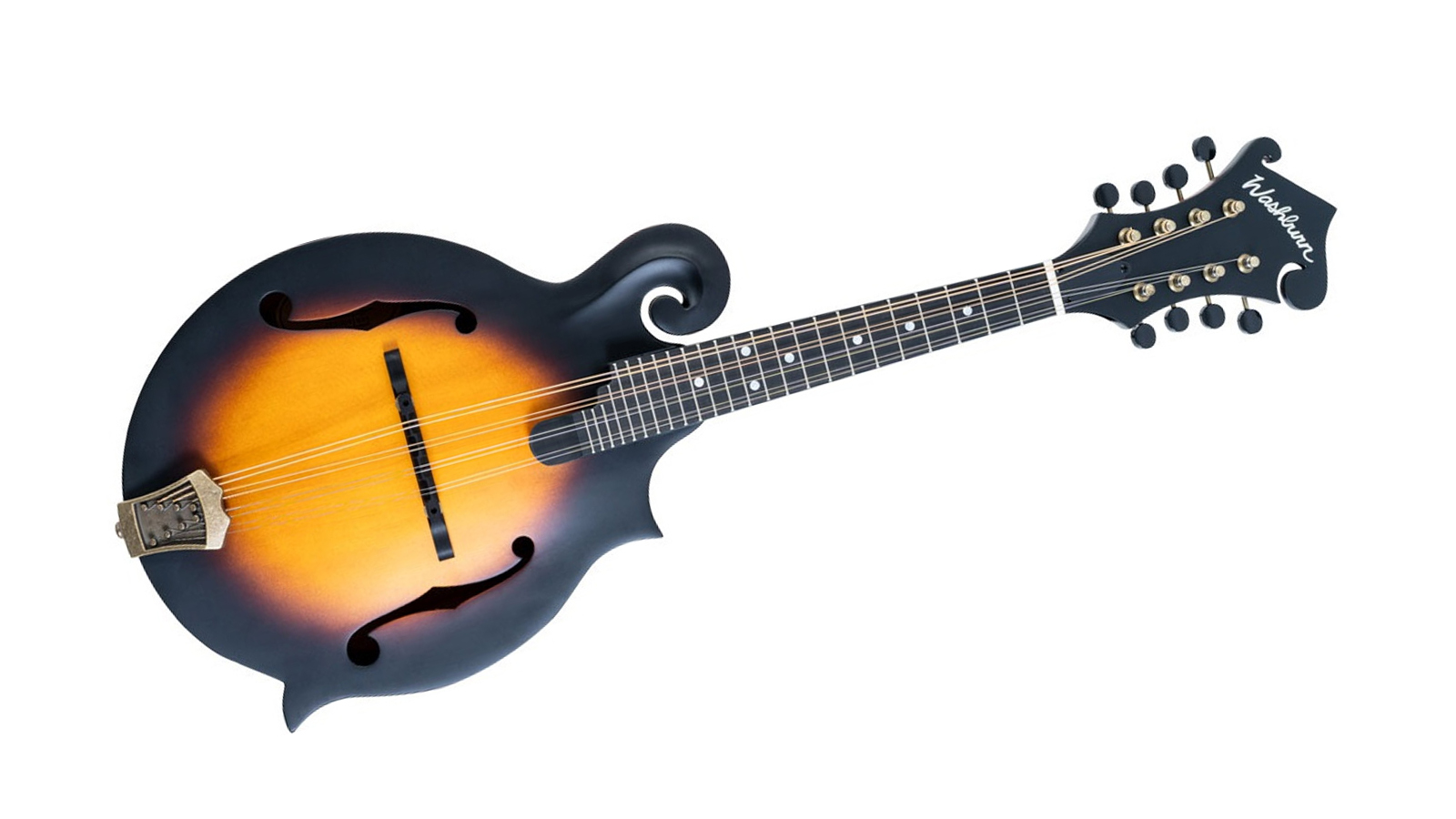
5. Washburn Americana M108SW
Our expert review:
Specifications
Reasons to buy
Reasons to avoid
Washburn first started making fine-quality mandolins in the 1880s, alongside guitars, banjos and other fretted instruments. Fittingly, the M108SW looks and feels just like a mandolin of that era, with its distressed satin finish revealing a dark vintage sunburst top and hog body. It’s not big on bling, but hey, we love the no-nonsense old-timer aesthetic.
Top and back are carved, with European spruce for the top and mahogany for the flip side. The sides are mahogany too. It’s a classic combination that promotes a balanced tone with plenty of clarity and warmth, delivered with impressive projection. Volume is further fortified by the M108SW’s deeper than average body, which makes it comfortable to play and imposing to look at.
In fact, if you’re large in stature, this could be the mandolin for you because Washburn has also given it a slightly wider 1.25” (31.75mm) nut with broader string spacing to accommodate bigger fingers. Nothing too drastic, but a couple of mm here and there can really help.
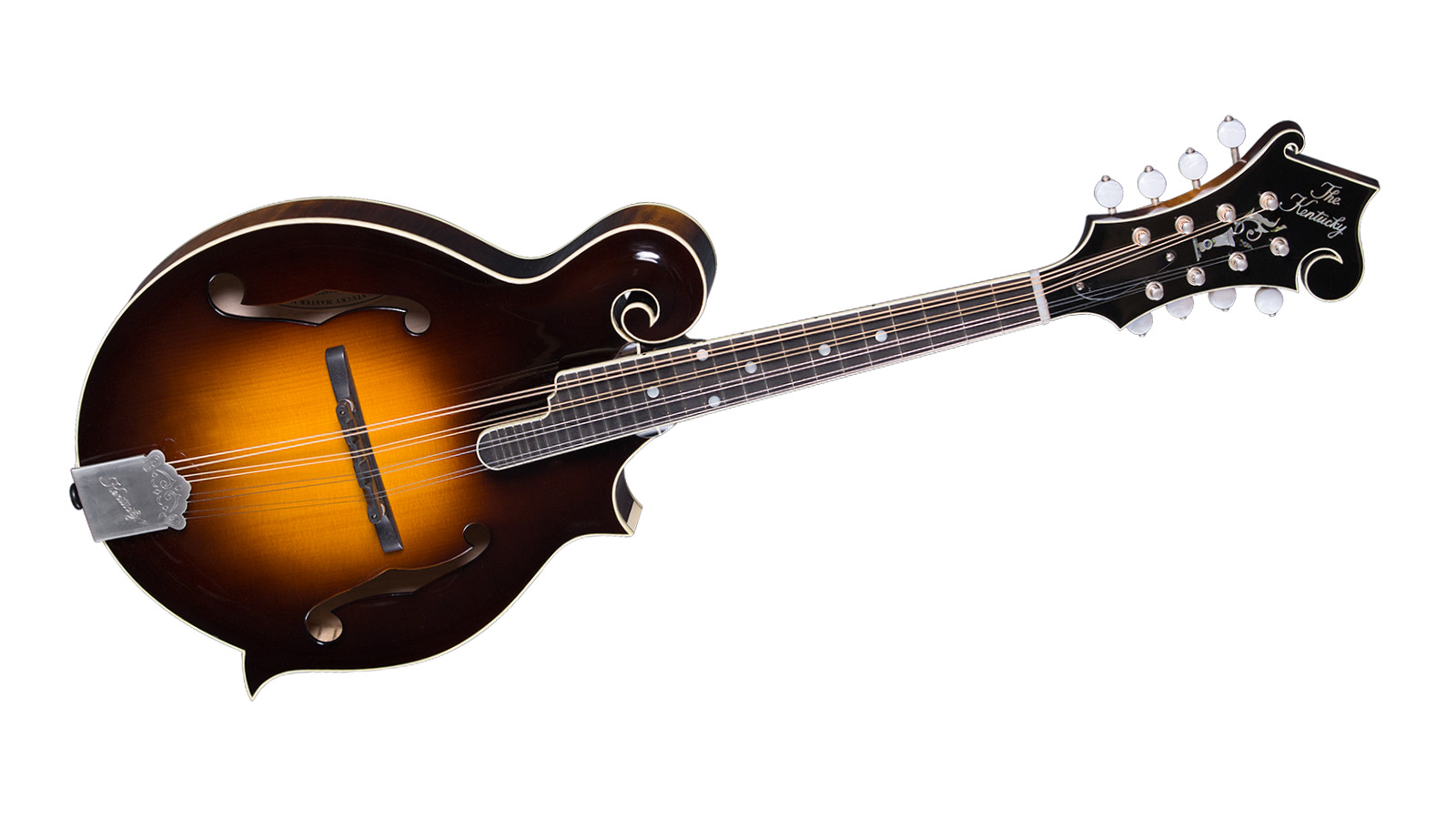
6. Kentucky KM-1000 Master F-Model Mandolin 1920s Sunburst
Our expert review:
Specifications
Reasons to buy
Reasons to avoid
Kentucky makes a few budget mandolins but its bread and butter is its pro-level instruments, manufactured in the Far East to keep costs relatively accessible. The KM-1000 sits well towards the top-end of its range, providing players with oodles of performance without going over the top on extravagant yet ultimately unnecessary features.
The top is a tasty slice of hand-carved Adirondack spruce, while the back and sides are carved, flamed Michigan maple. This lends the KM-1000 a bright, yet balanced, punchy tone that’ll cut through other instruments in a mix or live band setting.
It’s not too heavy on the bling, but that’s not to say that it doesn’t have visual presence. The high-gloss lacquer shows off the vintage sunburst finish a treat, and the elegant abalone Vine inlay on the headstock treads a line that’s just the right side of ostentatious. This is a gorgeous mandolin that deserves your attention.
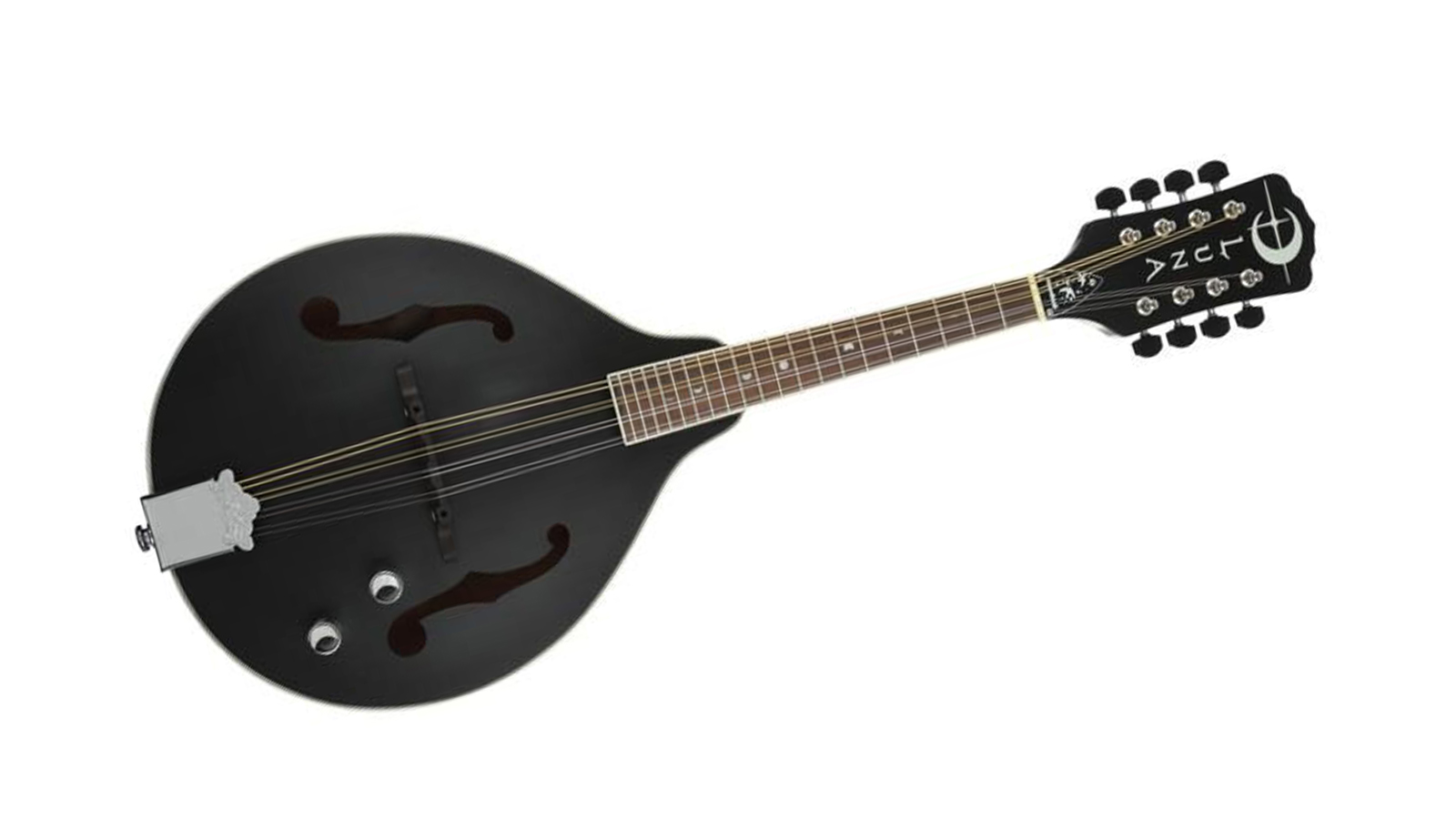
7. Luna Moonbird A-Style Acoustic-Electric Mandolin
Our expert review:
Specifications
Reasons to buy
Reasons to avoid
The Moonbird is a great choice if you’re working within a tight budget but need a mandolin that’s ready for the stage. Luna has reduced the price recently, which means that you can quite literally pick one of these up for $299/£219. That would be a great deal for an acoustic instrument, but the Moonbird comes complete with on-board electronics too.
This is a mahogany bodied mandolin with a spruce top. Not surprisingly, at this price the top and back are made from laminate rather than carved in the style of more expensive instruments, but no matter, it still sounds fantastic. It’s a plainer A-style mandolin too, so there’s no f-holes or curlicue but, given the choice, at this price point we’d rather settle for the piezo pickup than fancy scrollwork.
It's a simple instrument, just tune up and twirl the two shiny, chrome knobs in the lower bout to dial in the right amount of tone and volume. The Moonbird is begging to be plugged in so it can belt out some bluegrass. What are you waiting for?

8. Epiphone MM-30S A-style Mandolin
Our expert review:
Specifications
Reasons to buy
Reasons to avoid
Before Epiphone became the accessibly-priced arm of Gibson, it made high-grade fretted instruments, including some superb mandolins. These days, the quality remains remarkably high, while the prices have become far more down-to-earth. The MM-30S is another wonderful example of how Epiphone produces instruments that ordinary people can’t wait to play, at prices they can’t wait to pay.
What you’ll get for your money is an A-style mandolin with a solid spruce top, mahogany body and mahogany neck. It’s a looker - the open-style tuners, cream binding, rosewood fingerboard and evenly applied sunburst finish are features that elevate the MM-30S to a level that make its accessible price seem even more of a nonsense.
Cheap acoustic instruments can be a nightmare to tune, intonate and play but fortunately the MM-30S is an exception. Investing in a proper setup is probably a good idea, but after that you’ll be ready to roll. This super-affordable instrument is perfect for players on a limited budget, or guitarists who want to add some variety to their sets by dipping a toe into the mandolin tone bucket.
Best mandolins: Buying advice

A bit of mandolin history
MusicRadar's got your back
The mandolin is an ancient instrument that shares its lineage with the lute, so over time many types have emerged including the Neapolitan or round-backed mandolin, the flat-backed mandolin and the archtop mandolin. Both the Neapolitan and the flat-backed mandolins enjoy a comparatively niche following, the former finding favour with classical musicians and the latter with specific British, Brazilian and Mexican folk genres.
The archtop is by far the most popular style, which is why we’ve focused on this type when compiling this guide. It’s a relatively recent invention credited to genius luthier Orville Gibson of Gibson guitar fame towards the beginning of the 20th Century. In fact, his company was originally called the Gibson Mandolin-Guitar Manufacturing Co. Ltd.
Orville’s mandolins were constructed in a similar fashion to violins, with carved tops, tone bar bracing and four courses of doubled strings, usually tuned to G, D, A and E. Along with the guitar, banjo, bass and fiddle it became an intrinsic sound of US folk music, bluegrass and some jazz styles.
Gibson manufactured two distinct styles of mandolin, the elaborate F-style, with its Florentine scroll and violin-like f-holes, and the much plainer A-style, which was considerably cheaper to make. In the 1920’s Gibson employed a gifted luthier named Lloyd Loar, whose build style continues to be highly influential. Lloyd’s F-5 F-style mandolins remain highly collectible.
The F-style and A-style have endured to the point where most contemporary archtop mandolins are close-copies, or at the very least, interpretations of the originals. Just like the guitar market, which remains obsessed with the Strat, Tele, Les Paul and Dreadnought silhouettes, the mandolin scene isn’t one that readily embraces progress, but perhaps that’s a good thing.
How many strings does a mandolin have and how is it tuned?
Most mandolins, and almost all F-style and A-style models, feature eight strings tuned in tightly spaced pairs, which makes it feel like playing a four-stringed instrument. Its small, shallow body and high pitch means that sustain isn’t a mandolin strongpoint, but to some extent this can be overcome by rapidly picking a pair of strings, a technique that’s spawned that signature mandolin sound.
Because the four courses of strings are tuned to the same notes as a violin it’s easy to pick out fiddle tunes, which explains why the mandolin sound has become a much-loved part of US folk and bluegrass.
Mandolin tonewoods
Spruce, of one kind or another, is established as the de-facto choice for mandolin tops because it’s so well-balanced tonally. It excels at providing just the right amount of top-end brightness, mid-range clarity and low-end warmth.
Maple is a popular tonewood for backs and sides, due to the clarity and projection it brings to an instrument. If you need a mandolin that can cut through a mix then consider maple. Figured maple is one of the most stunning woods to look at too.
Mahogany enhances sustain and mid-range punch. Its consistent reddish grain means it’s not a particularly attractive wood, but players love the way it sounds.
Walnut is both beautiful to look at and hear. It produces an exquisitely balanced tone that’s rich in the low end yet adds bell-like clarity to the highs.
Rosewood is treasured for being perhaps the most balanced tonewood of all - full, rich and clear with superb projection. It’s also one of the most exquisite looking tonewoods.
How much should I spend on a mandolin?
The simple answer is as much as you can afford. This guide features mandolins from a very affordable $200/£200 to a heady $10,000/£10,000. How much is enough?
You can buy a very playable mandolin for $200/£200 but invest more if you have the budget. An expensive mandolin will almost certainly look better, but more importantly it will stay in tune more readily, intonate accurately and have a more comfortable action. The sound will be richer, fuller and more complex with greater volume and projection.
Cheap mandolins are quickly built from steam pressed sheets of laminate, whereas a pricier instrument will have a top and back hand-carved by an experienced luthier, a technique that delivers a tone that’s far superior.
At the very top end of the market a mandolin will probably be carpeted in exquisite inlays and other bling, but it will also have been built by a master luthier who really knows how to squeeze every last bit of tone from a piece of wood. Who can put a price on that?
Poplar songs that feature mandoline
Related buyer's guides
- Best guitar straps: boost comfort, support and security
- Best guitar cables: leads and patch cables for all budgets
- The best guitar cases and gig bags for protecting your gear
Want all the hottest music and gear news, reviews, deals, features and more, direct to your inbox? Sign up here.
When Simon's childhood classical guitar teacher boasted he 'enjoyed a challenge', the poor man had no idea how much he'd underestimated the scale of the task ahead. Despite Simon's lack of talent, the experience did spark a lifelong passion for music. His classical guitar was discarded for an electric, then a room full of electrics before Simon discovered the joys of keys. Against all odds, Simon somehow managed to blag a career as a fashion journalist, but he's now more suitably employed writing for MusicRadar and Guitar World. When not writing or playing, he can be found terrifying himself on his mountain bike.

![Goo Goo Dolls – Iris [Official Music Video] [4K Remaster] - YouTube](https://img.youtube.com/vi/NdYWuo9OFAw/maxresdefault.jpg)
